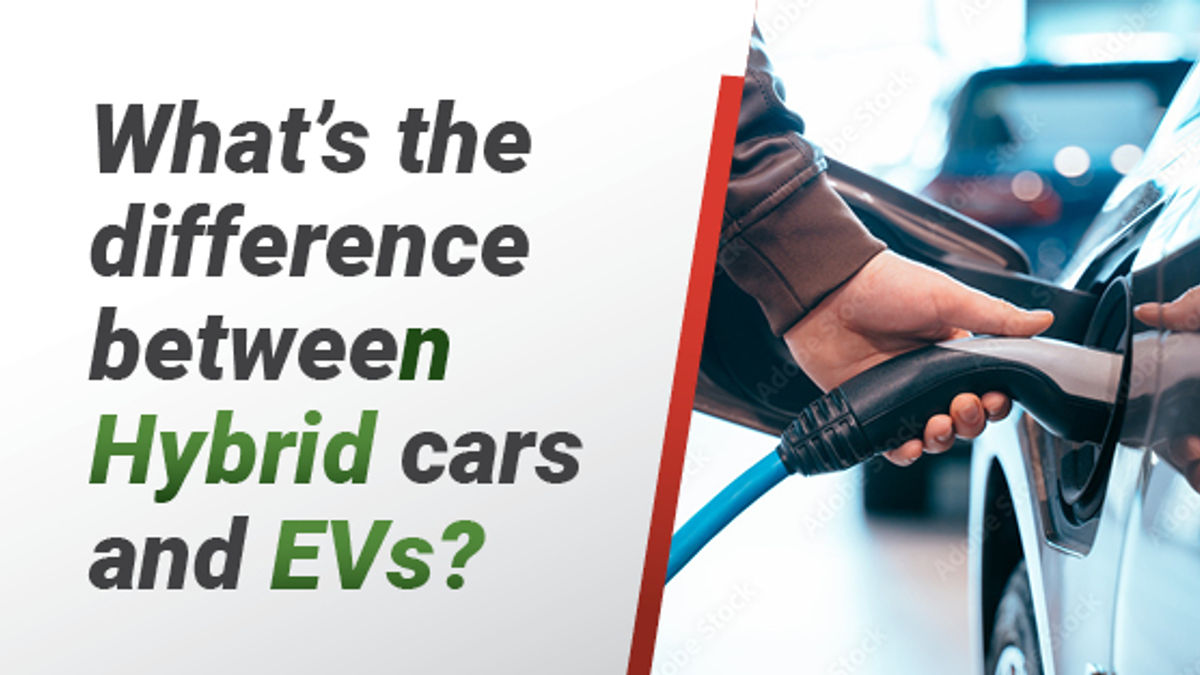What's the difference between hybrid cars and EVs?
13 Apr 2023 | Electric and Hybrid Vehicles

What's the difference between hybrid cars and EVs?
Gone are the days of just petrol or diesel fuelled vehicles for Kiwis to buy, instead there are now alternative power vehicles to choose from. In 2022, more New Zealanders bought non-traditional powered vehicles than ever before, due in part to high petrol and diesel prices and the continuing bonus of the Government’s Clean Car Discount.
The result is an electrifying trend in the new and used vehicle markets. The two main alternatives dominating sales last year were hybrid or electric vehicles (EVs) and that trend is set to continue in 2023. But what are the differences between a hybrid and an electric vehicle? It’s how each is powered, with a hybrid switching seamlessly between electric energy and a blend of petrol and electric power, while an EV runs on battery power alone. Out of the two, it’s hybrid cars that are the most popular in New Zealand.
What's the big deal about hybrids?
Hybrids sold in New Zealand are popular largely due to the fact they produce great fuel economy, and this is thanks to the engine set up. They combine a conventional petrol engine with an electric propulsion system called the hybrid vehicle drivetrain, which sends power to the driving wheels. Depending on the driving (such as at low speed in the city), the electric system is used, saving you on petrol.
So, why should you buy a hybrid? With fuel economy figures of on average 3/7litres per 100km, a hybrid helps you meet your fuel budget. With that, it’s no surprise that new and used hybrids make up for 42 percent of all vehicles sold in 2022. And it’s no surprise that one model stands out – the Toyota Prius.
Launched in 1997 globally, the Prius was the first first mass-produced hybrid car. As of September 2022, the Prius ranked as the world's top selling hybrid car with five million units sold. While the first Prius to be sold here were New Zealand new, soon Japanese used imports provided a strong option for Kiwis wanting a hybrid at a cheaper price. The Prius was joined by the used import Toyota Aqua small hatchback hybrid, which became so popular that it was the top selling second-hand hybrid sold in 2022, ahead of the Prius.
Also in the hybrid mix for Kiwi consumers is the Toyota C-HR small SUV while the second-hand Honda Vezel (also known as the Honda HR-V) is a family favourite due to it being a medium-sized SUV. Also a favourite in the Honda family is the second-hand hybrid hatchback, the Honda Fit (also known as the Jazz).

2017 Toyota Aqua Hybrid
Driving an electric car
To many New Zealanders, the electric car (EV) is still a futuristic vehicle, but they have soared in popularity from just 100 sold in 2013 when the first ones were available here, to over 47,000 new and used electric cars bought by Kiwis last year.
It was Mitsubishi’s tiny two-seater hatchback i-MiEV that was the first electric car sold in New Zealand, but you have to thank the Nissan Leaf for converting Kiwis to the future. The compact five-door Nissan Leaf hatchback was first launched globally in 2010 but it’s the second generation model that made it a hero for electric vehicles in New Zealand. That’s due to the fact that generation one had an electric range of 117 km while the latest one has a more practical limit of 364 km.
And what is electric range? Well, that’s how far you can travel before you have to plug it in to recharge, be it at your home via three-point plug, a wall unit at home, or a public charging station.

2018 Nissan Leaf Electric Car
A third option, Plug-in Electric Vehicle (PHEVs)
The Plug-in Electric Vehicle (PHEV) is a popular alternative for the pure electric vehicle; it gives you a range of electric but the backup of a petrol engine – so you don’t need to worry about range anxiety. Range anxiety? What’s that? It’s when you have 50 kms left on your electric battery but you have 60 kms until you arrive at your destination. Turning off the air con and setting the EV to eco power will sort that out, but it’s still a nervous drive until you can plug in.
And talking of plugging in, lets look at the number of PHEVs available now. More and more car brands are adding PHEVs to their line-up as the bridge between hybrids and full electric vehicles.
The most popular PHEV here is the Mitsubishi Outlander, a large SUV that's been winning customers since it was first launched in New Zealand.
The New Zealand new Outlander is the top selling PHEV while second-hand versions of the PHEV are sought-after thanks to its electric range of up to 84 kms. Considering the average daily commute for New Zealanders is 15km one way, that’s a lot of driving before you have to plug it it to recharge it.

2014 Mitsubishi Outlander PHEV Hybrid